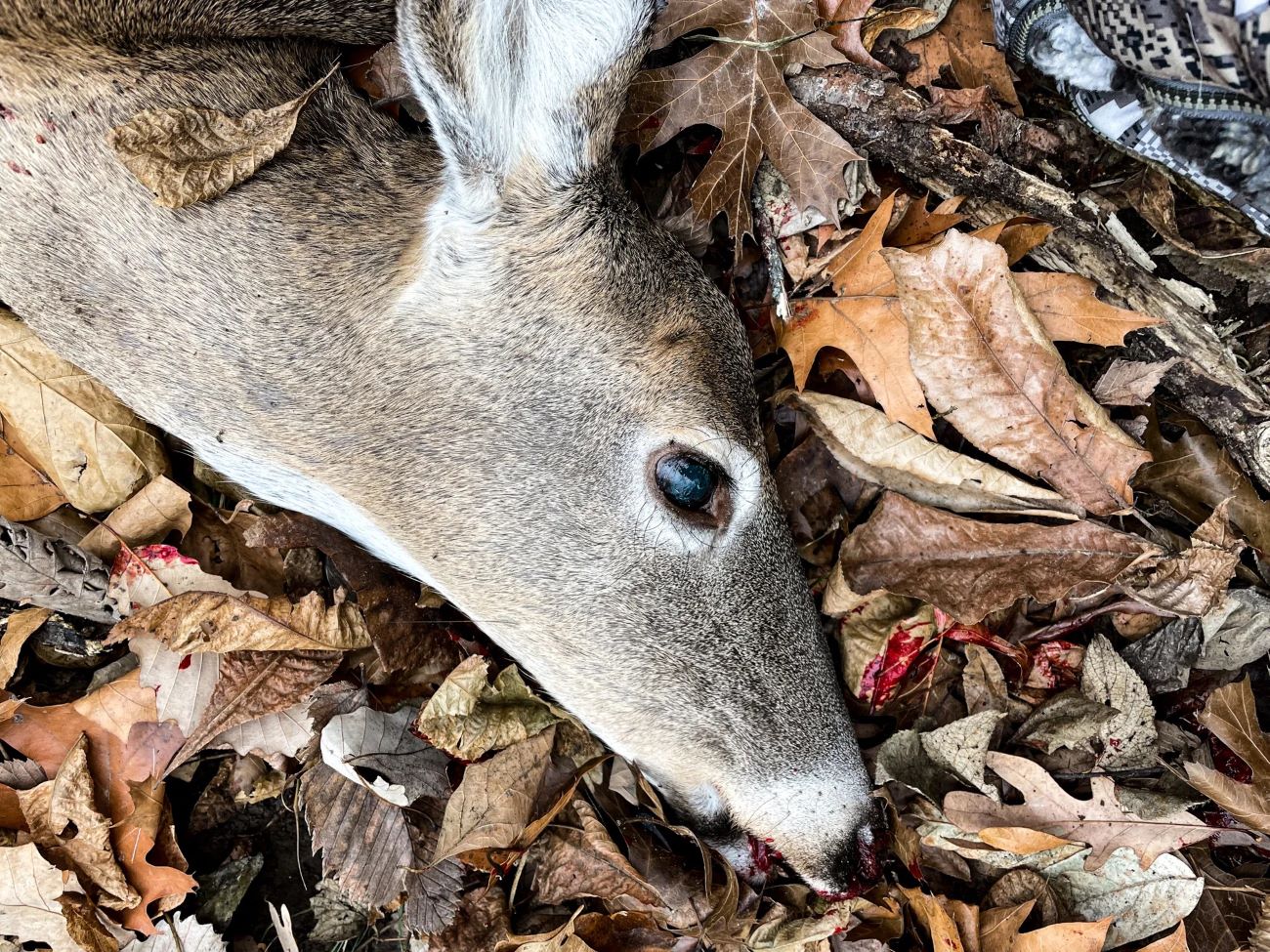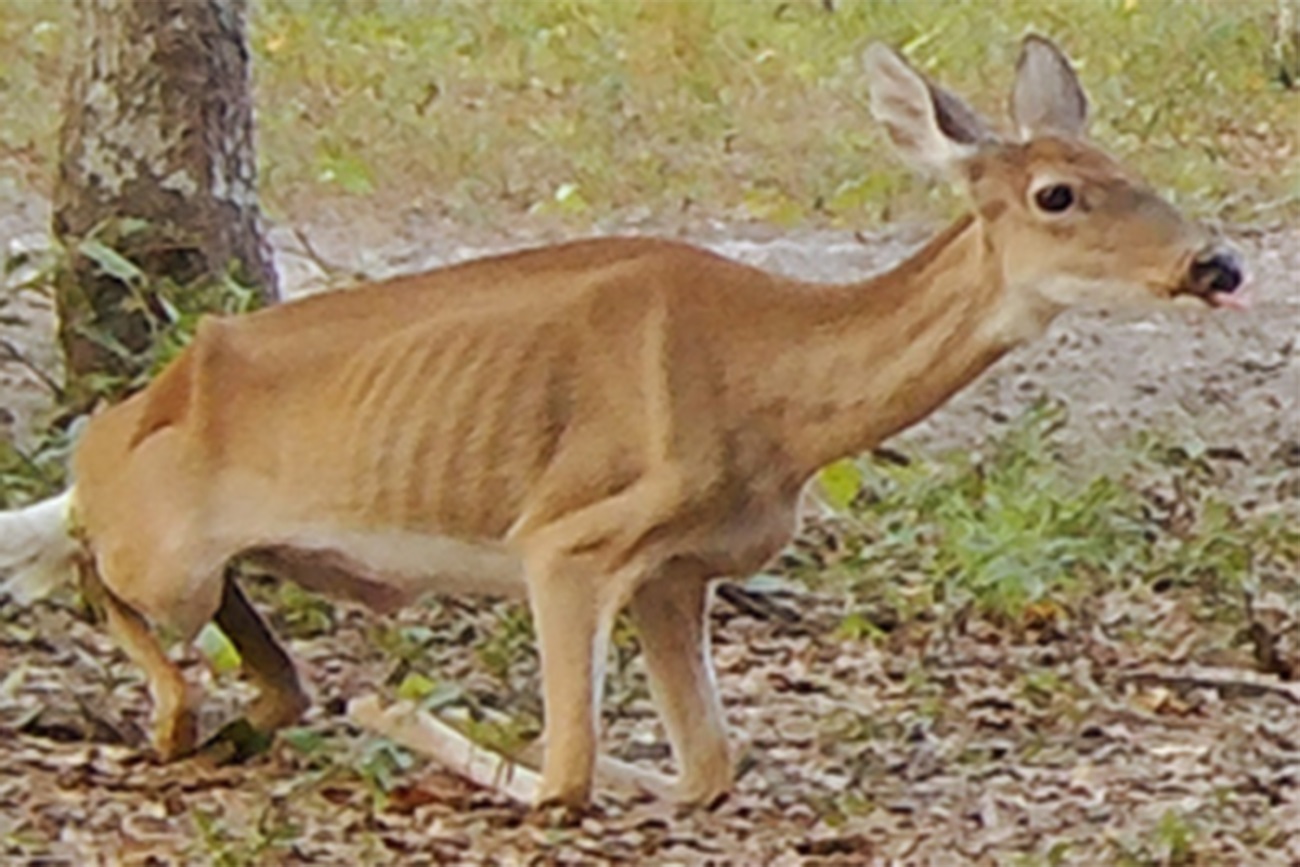A new study of prion diseases, utilizing a human cerebral organoid model, suggests a significant species barrier prevents the transmission of chronic wasting disease (CWD) from cervids—deer, elk, and moose—to humans.
These findings, published in Emerging Infectious Diseases by scientists from the National Institutes of Health (NIH), align with decades of similar research conducted using animal models at the NIH’s National Institute of Allergy and Infectious Diseases (NIAID).
Prion diseases are degenerative conditions affecting some mammals, primarily causing brain deterioration but also impacting the eyes and other organs.
These diseases result in fatality when abnormal proteins misfold, clump together, recruit other prion proteins to do the same, and eventually destroy the central nervous system. Currently, no preventive or therapeutic treatments exist for prion diseases.
CWD is a type of prion disease found in cervids, which are popular game animals. While CWD has never been identified in humans, a question has persisted for decades: Can people who consume meat from CWD-infected cervids develop prion disease?
This concern is significant due to the emergence of another prion disease—bovine spongiform encephalopathy (BSE), or mad cow disease—in cattle in the United Kingdom during the mid-1980s and mid-1990s. Cases were also detected in other countries, including the United States.
Over the following decade, 178 people in the U.K. who were believed to have consumed BSE-infected beef developed a new form of human prion disease, variant Creutzfeldt-Jakob Disease (vCJD), and died.
Researchers determined that the disease had spread among cattle through feed contaminated with infectious prion protein.
This transmission path from feed to cattle to humans alarmed U.K. residents and raised global awareness about other prion diseases potentially transmittable from animals to humans, including CWD, which is highly transmissible among cervids.
Historically, scientists have used mice, hamsters, squirrel monkeys, and cynomolgus macaques to simulate prion diseases in humans, sometimes monitoring animals for signs of CWD for over a decade.

In 2019, NIAID scientists at Rocky Mountain Laboratories in Hamilton, Montana, developed a human cerebral organoid model of Creutzfeldt-Jakob Disease to evaluate potential treatments and study specific human prion diseases.
Human cerebral organoids are small spheres of human brain cells, ranging in size from a poppy seed to a pea. Scientists cultivate organoids in dishes from human skin cells.
The organization, structure, and electrical signaling of cerebral organoids are similar to brain tissue, making them the closest available laboratory model to the human brain.
Because organoids can survive in a controlled environment for months, scientists use them to study nervous system diseases over time.
Cerebral organoids have been used as models to study other diseases, such as Zika virus infection, Alzheimer’s disease, and Down syndrome.
In the new CWD study, conducted primarily in 2022 and 2023, the research team validated their model by successfully infecting human cerebral organoids with human CJD prions (positive control).
Using the same laboratory conditions, they then exposed healthy human cerebral organoids to high concentrations of CWD prions from white-tailed deer, mule deer, elk, and normal brain matter (negative control) for seven days.
The researchers observed the organoids for up to six months, and none became infected with CWD.
According to the researchers, this suggests a substantial resistance or barrier to the propagation of infection in human central nervous system tissues even after direct exposure to CWD prions.
The authors acknowledge the limitations of their research, including the possibility that a small number of people may have genetic susceptibilities that were not accounted for and that new strains with a lesser barrier to infection might emerge.
However, they are optimistic that the current data indicate humans are extremely unlikely to contract a prion disease from inadvertently consuming CWD-infected cervid meat.
